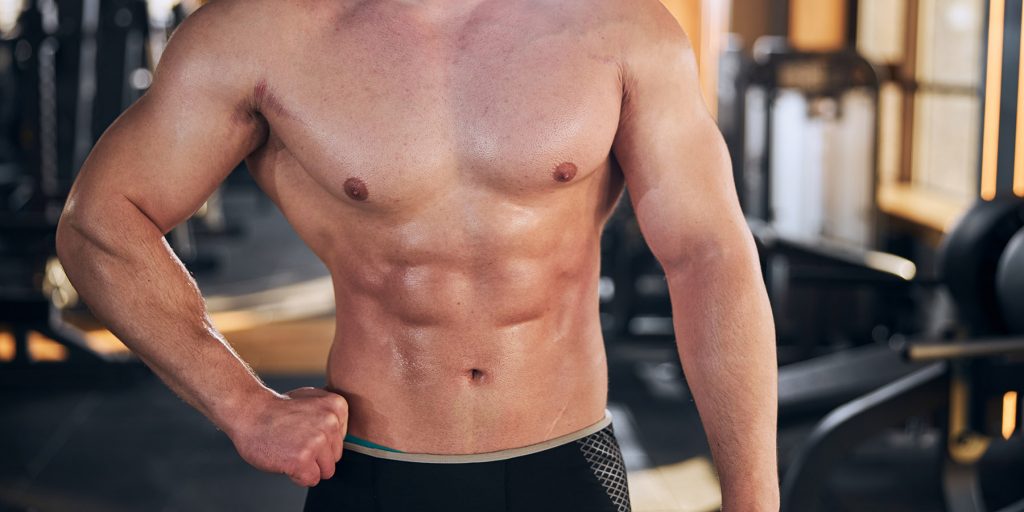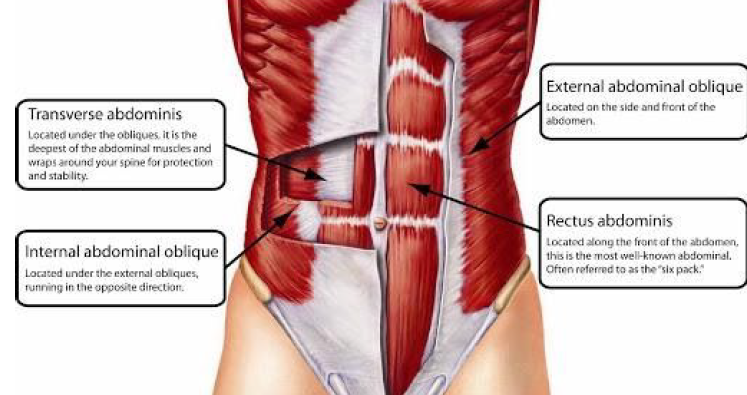Today you will learn how to build abs. We will show effective exercises and consider the anatomy of the
abdominal muscles.
Well-developed abdominal muscles are the ultimate goal in the development of your athletic body. After all,
there is no doubt that even a body that does not have outstanding muscle volumes but has a well- defined
abs, will look very attractive.
But abdominal muscles are not only aesthetic beauty but also an indicator of health since they allow you to
maintain a beautiful posture and a healthy spine. Any complex movement begins with a contraction of the
abdominal muscles of the cortex. Only after they get involved in the work, the strength can be used for the
arms and legs to the barbell or dumbbells. The abs, like the lumbar muscles, refers to the muscles –
stabilizers.

Table of Contents
Several Reasons You Should Workout Your Abs
- Spine protection. The spine is supported not only by the back muscles but also by the abdominal
muscles. If the abdominal muscles are not sufficiently developed, this increases the tension in the
intervertebral discs of the spine, which increases the risk of destruction of the lumbar. - Relieve muscle tension. At night, the muscles of the lower back often remain tense, as a result of
the spine does not recover. A person wakes up tired, his/her back hurts. - Improving sports performance. The abdominal abs plays an important role in all domestic activities,
as well as in those sports where you need to quickly run or turn the torso. Athletes with weakened
abdominals are more likely to have colic in the side. Strengthening the abdominal muscles is a great
way to solve this problem. - Improvement of the gastrointestinal tract. Abdominal training improves digestion, prevents
bloating, and constipation.
Anatomy of Abdominal Muscles

Rectus Abdominis Muscle
The motor function of this muscle is carried out in the “twisting” of the body relative to the hips and,
conversely, the hips relative to the body. Exercises for the rectus muscle are divided into two types. Some
load the upper region of the rectus muscle, others – the lower. So, when performing classic crunches, the rectus muscle tenses along its entire length, but its upper part takes on most of the load. And, on the contrary, reverse twisting, when pulling the knees to the chest, the lower part of the abs takes up more load. Thus, strengthening the rectus abdominal muscle will help you achieve the best physical shape in those athletic disciplines that require jogging, jumping, weight lifting, etc.
Internal and External Oblique Muscles
The external oblique muscles “hug” the sides of the body, they run diagonally relative to the rectus
abdominal muscle. Directly below them is the oblique internal muscle, its fibers go at a counter angle to the
external oblique. Thanks to this device, multidirectional internal and external oblique muscles help each
other. These abdominal muscles tilt, bend and rotate the torso. When some muscle groups perform dynamic
work, others strain statically, thereby stabilizing the body. Strengthening these muscle groups will help to
achieve success in tennis, golf, baseball, etc. It will be easier for you to rotate the body in any activity with
stronger oblique muscles.
Intercostal Muscles
Intercostal muscles belong to the group of deep pectoral muscles. These are short muscle fibers connecting
the costal bones. Their function is simple but very important – to ensure the movement of the chest during
breathing. Pumping up these muscles is quite difficult, the list of exercises to strengthen them is not
long. Basically, they are all associated with the inclination of the chest towards the pelvis: the body will
need to be bent and twisted. Isolated exercises for intercostal muscles do not exist, in any case, oblique
muscles of the abdomen, dentate muscles of the chest, and many other parts of the body will also be
involved.
Transverse Abdominal Muscles
The transverse muscles pass horizontally relative to the abdominal wall. The fibers of these muscles are
directed transversely. Therefore, you won’t be able to pump them up with any crunches. The task of the
transverse muscles is to protect our intestines from shaking during running and walking, as well as to
increase the internal pressure when exhaling.
Analysis of Abs Workout
Strong abs help to engage in any kind of physical activity more effectively, since they hold the body
position, thereby reducing the stress on the spine. We recommend changing the set of exercises every 6-8
weeks so that the muscles do not have time to adapt to the same workout. You will get the desired results
faster and do not get bored of the monotony.
Hundreds of crunches and squats will not help you get a flat, tight stomach. Do not waste time with endless
repetitions. Strengthening the muscles of the abs can only be concentrated on the part of the body that you
are working on. You need to know which muscles work and where they are – then you can feel them during
each repetition. Otherwise, you can end up using the muscles of the neck and hips, and the muscles of the
abs will not get the work done, which means they will not strengthen.
The main exercise for the abs is a crunch. One of the main mistakes that athletes often make when
performing this exercise is to fully raise the back, which in turn puts a strain on the lumbar region of the
back but does not help in the formation of abdominal muscles. Therefore, before you begin to perform this
exercise, familiarize yourself with the correct technique for its execution.
Also, we do not recommend concentrating on abs training with specialized exercises, because these muscles
are involved in many basic exercises, such as squats and deadlifts. It will be enough to give your abdominal
muscles two workouts per week.
Another fact to remember – what you eat and drink is more important than how you exercise. After all, a
good work of the abdominal muscles is primarily the merit of the low percentage of fat in the body and not
endless training. Therefore, review your diet.

Should I do abs before or after the main workout?
If your goal is a six-pack, I would recommend to do core exercises at the beginning of your workout instead of the end. If you want to keep your muscles toned, you can do abs at the end. But note that this is not effective for building muscle.
Do planks burn fat? Cause I don’t understand how it works with static exercises..
Actually, plank is one of the best calorie burning exercises. A plank engages multiple muscles at once, thereby it not just burns the fat around your abdomen area, but also improves posture and flexibility.
Will my stomach look bigger if I build abs?
Hi there! I would say that building a little muscle has no appreciable effect on the size of your stomach.